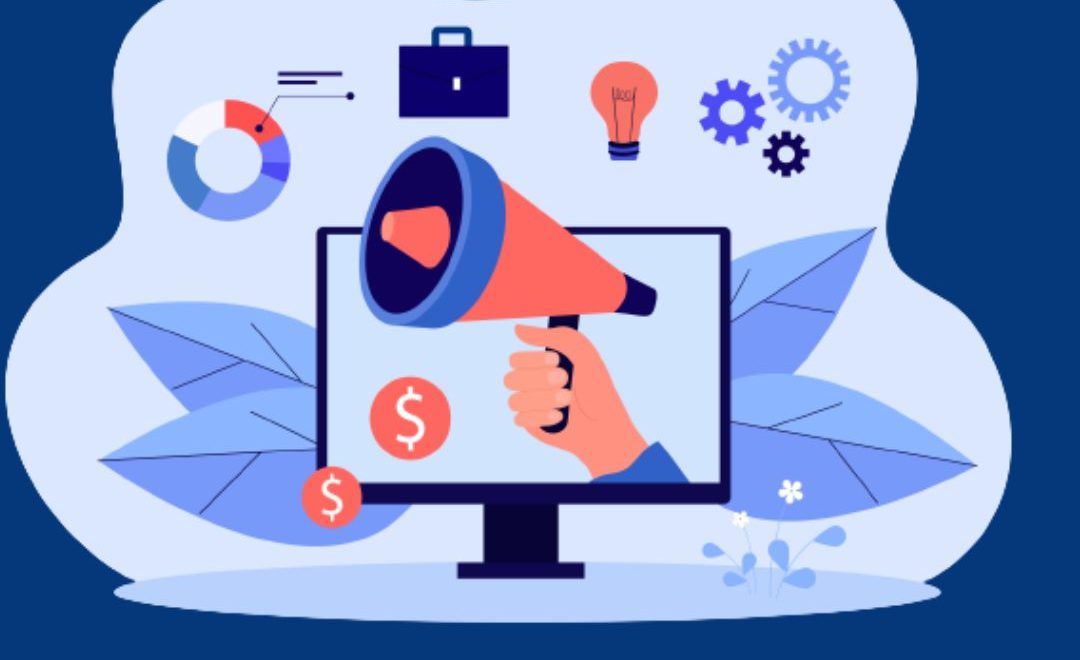The percentage of people who leave a website after viewing only one page without going on to any other pages is known as the bounce rate. It basically measures the proportion of visitors who leave the website without interacting further. A high bounce rate may indicate that visitors are not finding what they are looking for or that the website is not effectively engaging them. This could be because of a number of things. Sometimes a design may be hard to understand or doesn’t look good, content may written poorly, slow loading times or no clear calls to action etc. A low bounce rate, on the other hand, typically indicates that visitors are finding the website useful, interesting, or engaging, and that they are exploring multiple pages or performing other actions, such as submitting a contact form or making a purchase.
It is essential to keep in mind that the bounce rate can vary from website to website and from goal to goal. A blog, for instance, might have a higher bounce rate than an e-commerce site because visitors might be more interested in reading a single post than looking at products. As a result, it’s critical to consider bounce rate in relation to the audience and goals of your website.
Let us have a look on some top factors that can reduce the bounce rate for your website:
1. Improve website speed
A crucial step in lowering bounce rates and improving user experience is speeding up websites. Pages that take a long time to load can frustrate visitors, prompting them to quickly leave your website. Optimizing images, using caching, minimizing CSS and JavaScript, utilizing a Content Delivery Network (CDN), enabling Gzip compression, utilizing a faster web hosting service, reducing the number of plugins and scripts, and optimizing website code are all ways to speed up your website.
Your website’s speed will improve as a result of these measures.It will improve user experience, increase engagement, and ultimately increase conversions. It is essential to regularly monitor your website’s speed and make any necessary adjustments to ensure that it loads as quickly as possible.
2. Optimize website design
A key component in lowering bounce rates and enhancing the overall user experience of a website is optimizing its design. A well-optimized website should have clear calls to action, be easy to navigate, and be visually appealing. You can do this by using a color scheme that matches your brand and a straightforward layout.
Make sure the structure of the website is easy to understand by using internal linking, breadcrumbs, and a clear menu for getting around. Since most people use smartphones to access websites, make sure your website is optimized for mobile devices. Make use of videos and images of high quality that load quickly and are relevant to the page’s content. Finally,make use of headlines and subheadings that are both clear and concise to make it easier for visitors to quickly scan the page and locate the information they are looking for.
3. Improve website usability
You can increase user engagement, decrease bounce rates, and ultimately drive more conversions on your website by improving its usability.A website that can be used should be simple to use, have clear calls to action, and have a design that makes sense. You can identify any issues with your website’s navigation, content, or design by carrying out user testing. This will help you improve the usability of your website. Your website should be mobile-friendly and accessible to people with disabilities.
Make use of videos and images of high quality that load quickly and are relevant to the page’s content. On your website, make it easy for users to complete tasks like signing up for a newsletter, making a purchase, or filling out forms. Finally, aid users in successfully completing tasks by providing clear and concise instructions and feedback.
4. Make content more engaging
It is essential to improve the content of your website in order to reduce bounce rates and keep visitors on your site for longer. Relevant, informative, and visually appealing content should be engaging. Understanding your target audience and tailoring your content to their interests and requirements are the first steps toward making your content more engaging. Break up long blocks of text with eye-catching headlines, subheadings, and images to make your content easier to read.
To make your content more relatable and memorable, employ storytelling techniques and a conversational tone to engage your audience. Make your content more engaging and shareable by incorporating multimedia elements like videos, podcasts, and infographics. Last but not least, use surveys, comment sections, and social media integration to get feedback from your audience and start a conversation.
5. Use high-quality visuals
Your website will look better and be more interesting to visitors if you use high-quality images and videos. A good way to make your website more engaging and lower bounce rates is to use high-quality images. Images and videos of a high quality can captivate visitors and make it easier for them to comprehend your content. Start by using images that are relevant to your content and convey your brand’s message to use high-quality visuals effectively.
Make use of high-resolution images that load quickly and use descriptive file names and alt tags to make them more search engine friendly. In a similar vein, ensure that videos are optimized for a variety of screen sizes and devices when demonstrating your products or services. Lastly, infographics can be used to summarize complex information, make it more visually appealing, and make it easier to share
6.Make the website mobile-friendly
Make sure your website is responsive to different screen sizes and optimized for mobile devices. A mobile-friendly website is essential for lowering bounce rates and enhancing user satisfaction. Your website must be optimized for various screen sizes because the majority of internet traffic comes from mobile devices. Start by using a responsive design, which automatically adjusts the layout and content to fit the screen size. Make certain that website loads quickly and does’nt necessitate users zooming in or out in order to read the content.
Make use of mobile-friendly navigation, like a hamburger menu, and try to complete tasks with as few clicks as possible.Finally, test your website across a variety of browsers and devices to spot any issues and make any necessary adjustments. By making your website compatible with mobile devices, you can enhance the user experience and lower bounce rates.
7. Improve website accessibility
Make sure your website is accessible to people with disabilities by using alt text for images,clear headings, fonts etc.If you want your website to be accessible to as many people as possible, you must make it easier for people with disabilities to use it. Use simple language and use alternative text for images and other media to make website accessible to people with disabilities.
To make your content accessible to visually impaired, make use of colors with a high contrast and large font sizes. Because some people with motor impairments are unable to use a mouse, make sure your website can be accessed with a keyboard. Finally, make it simpler for visitors to comprehend the content and navigate the website by employing descriptive headings and links.
8. Use clear and concise headlines
To attract visitors to your website and make it easier to read, use headlines that are both clear and succinct.A way to reduce bounce rates and enhance the user experience is to use headlines that are clear and concise. Your headlines should be catchy and informative because they are the first thing visitors see when they arrive at your website. Avoid using jargon or complicated language in your headlines, which should be brief and to the point. Make headlines more engaging by employing active voice and strong verbs to entice readers to continue reading. Finally, make certain that the headlines of the page do not deceive visitors and accurately portray the content.
9. Optimize meta descriptions
Use compelling meta descriptions to entice visitors to click through to your website. Optimizing meta descriptions is an essential aspect of on-page SEO.It help to reduce bounce rates by providing users with clear and concise summary of the content on your website. Meta descriptions are the snippets of text that appear under the page title in search engine results pages.
To optimize meta descriptions effectively, start by using keywords that are relevant to your content and match users’ search intent. Keep meta descriptions short, between 130 and 155 characters, to ensure that they don’t get truncated in the SERPs. Use active voice and strong calls-to-action to encourage users to click through to your site. Finally, ensure that meta descriptions accurately reflect the content on the page.It provide users with a clear idea of what to expect when they land on your website
10. Use internal linking
Visitors to your website can be directed to other pages that might be of interest to them by using internal linking. Internal linking is a good way to make your website’s content more visible, reduce bounce rates, and increase user engagement. Linking to other pages or content on your website is known as internal linking. This gives users more resources and encourages them to look around more.
Start by identifying the important pages on your website and linking them from other pages to use internal linking effectively. Use descriptive anchor text that encourages users to click through and accurately reflects the content of the linked page. Finally, rather than just adding links, make sure that the internal links are useful and enhance the user experience.
11. Use external linking
Use external links to authoritative sources to provide additional context and information to visitors. Using external linking is an effective way to improve the credibility and authority of your website. External linking involves linking to other websites or content outside of your website. To use external linking, start identifying sources that are relevant to your content and link to them from your website. Use descriptive anchor text that accurately reflects the content of the linked page and encourages users to click through. Avoid linking to spammy or low-quality websites, as this can harm your website’s credibility and authority. Finally, ensure that external links are relevant and add value to the user’s experience.
12. Provide social proof
To build visitors’ trust and credibility, include social proof like customer reviews and testimonials. On your website, you can reduce bounce rates, increase user engagement, and increase conversions by providing social proof. Utilizing user-generated content like testimonials, reviews etc to demonstrate the value of your services is called social proof.
Start by prominently displaying testimonials and reviews from pleased customers on your website to effectively provide social proof. To give the testimonials more credibility and to encourage users to leave their own reviews, use photos and real names. Finally, you want to think about showing how many social media followers, likes, and shares your website has got. This will show that your brand is popular and authoritative.
13. Monitor website analytics
Monitor website analytics to identify pages with high bounce rates and make improvements. Monitoring website analytics is an essential aspect of improving the performance of your website, reducing bounce rates, and increasing conversions. Website analytics tools, such as Google Analytics, provide valuable insights into user behavior on your site. It include the number of visitors, their location, the pages they visit and how long they stay on your site. By monitoring website analytics, you can identify areas of site that are underperforming and make decisions to improve their performance.
14. Run A/B tests
You can have A/B test of your website to determine which layouts are most effective at lowering bounce rates.A good way to find underperforming parts of your website is to run A/B tests. A/B testing is the process of creating two or more versions of a website with minor changes like different headlines or images and randomly showing them to users to see which one is more successful.You can determine which version of the website has lower bounce rate and higher engagement by analyzing the data.Then, you can use this information to make changes to your website that will lower bounce rates across all pages. You could experiment with a variety of calls to action and page layouts to determine which ones resonate with audience.
Conclusion
Zenerom as a digital marketing company works to lower website’s bounce rates. We optimize websites that enables businesses to enhance the user experience on their websites and boost conversion rates.We tracks where users click on a website and shows which parts of the page are most interesting to them. The design and layout of a website can be improved using this information to reduce bounce rates. We can manage businesses to make data-driven decisions about how to improve their website and reduce bounce rates.




